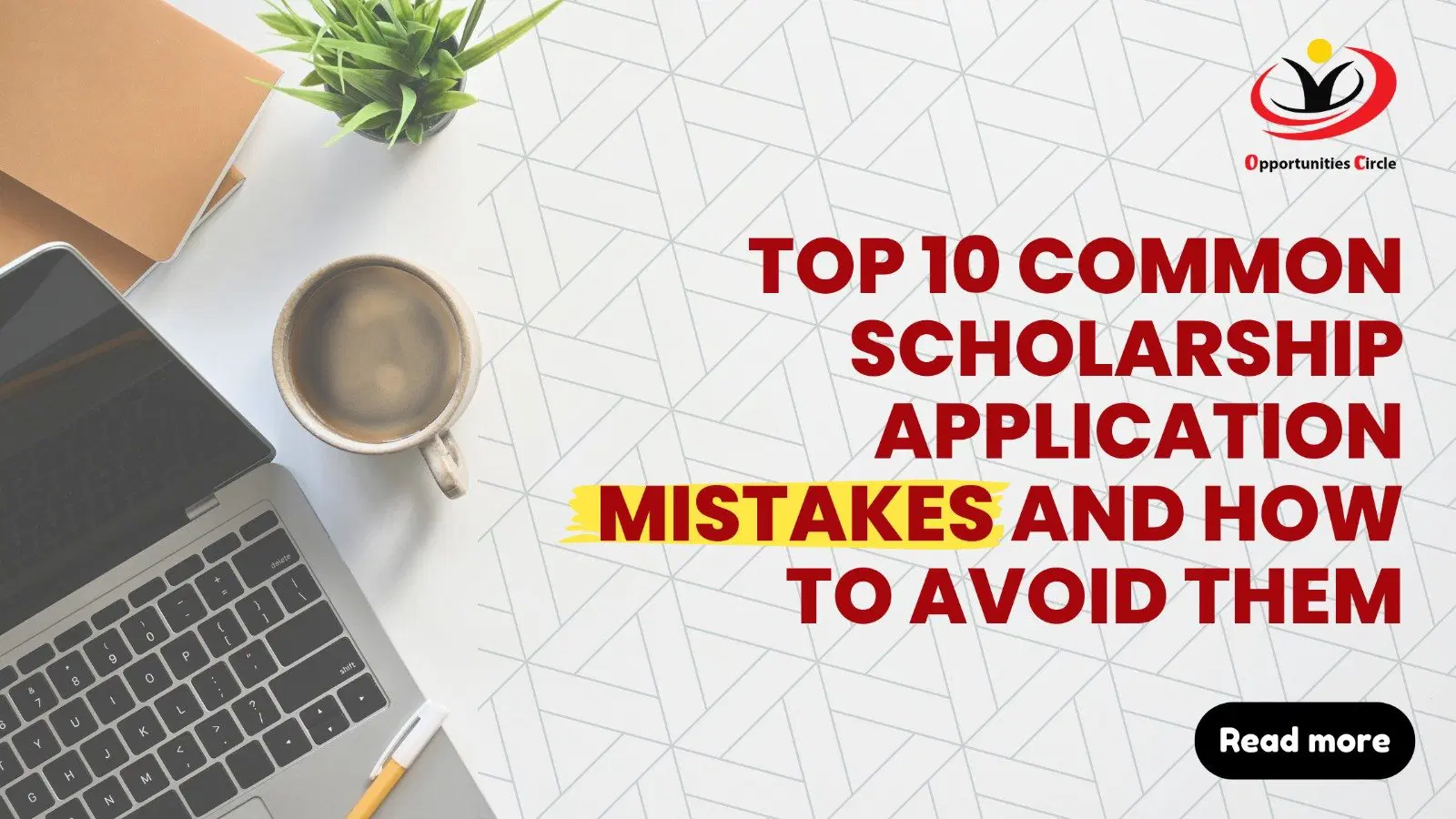Why Scholarships Matter
Securing a scholarship can be life changing. Scholarships help ease the financial burden of education, allowing students to focus on academics and personal growth. However, the process of applying for scholarships can be daunting and competitive. With thousands of applicants vying for limited awards, even minor mistakes can cost you a chance to win.
This article will explore the most common mistakes students make when seeking scholarships and provide practical tips to avoid them. By understanding these pitfalls, you can position yourself as a strong candidate and increase your chances of success.
Scholarships offer much more than financial aid; they open doors to opportunities, build confidence, and enhance resumes. They are often awarded based on merit, need, or specific criteria such as extracurricular involvement or leadership skills.
“Scholarships are investments in students who are dedicated to making a difference.”
However, navigating the application process can be challenging. Let’s dive into the most common mistakes and how to avoid them.
1. Missing Deadlines: One of the most avoidable yet common mistakes is missing the scholarship application deadline. With so many scholarships available, students often struggle to keep track of multiple deadlines.
How to Avoid This Mistake:
- Create a Calendar: Use digital tools like Google Calendar or apps like Notion to organize deadlines.
- Set Reminders: Schedule multiple reminders leading up to each deadline.
- Prioritize: Focus on scholarships with the nearest deadlines first.
Table 1: Example of Scholarship Tracking Calendar
| Scholarship Name | Deadline | Requirements Submitted | Status |
|---|---|---|---|
| Academic Excellence Award | January 15 | Yes | Submitted |
| STEM Innovators Scholarship | February 10 | No | In Progress |
| Community Leadership Grant | March 1 | Yes | Under Review |
2. Submitting Incomplete Applications: Incomplete applications are another major reason why students are disqualified. Missing documents or unanswered questions signal a lack of preparation and commitment.
How to Avoid This Mistake:
- Double-Check Requirements: Carefully review the application checklist to ensure all required materials are included.
- Proofread and Review: Have someone else review your application to catch any mistakes or missing details.
- Use an Application Tracker: Keep track of completed components for each scholarship.
3. Ignoring Eligibility Criteria: Applying for scholarships that you don’t qualify for is a waste of time and effort. Eligibility criteria exist for a reason and ignoring them shows a lack of attention to detail.
How to Avoid This Mistake:
- Read Carefully: Review the eligibility criteria for each scholarship before applying.
- Be Honest: Avoid embellishing your qualifications to meet requirements.
- Match Yourself: Focus on scholarships aligned with your background, achievements, and goals.
“Scholarships are like puzzles; you have to fit the right pieces together to win.”
4. Writing Generic Essays: A generic essay that lacks personalization can ruin your chances. Scholarship committees want to see your unique voice and story, not a cookie-cutter response.
How to Avoid This Mistake:
- Tailor Each Essay: Customize your essay for each scholarship by addressing the specific prompts.
- Show Personality: Share personal anecdotes and experiences that highlight your individuality.
- Focus on Impact: Explain how winning the scholarship will help you achieve your goals and contribute to your community.
5. Overlooking Smaller Scholarships: Many students focus solely on prestigious or high-value scholarships, ignoring smaller awards. While larger scholarships are appealing, they are also more competitive.
How to Avoid This Mistake:
- Apply Broadly: Include smaller, local scholarships in your search.
- Combine Awards: Multiple smaller scholarships can add up to significant financial support.
- Search Strategically: Use online platforms like Fastweb or local community resources to find lesser-known scholarships.
6. Failing to Follow Instructions: Ignoring specific instructions, such as formatting requirements or word limits, can disqualify your application.
How to Avoid This Mistake:
- Read Instructions Carefully: Highlight key details and requirements.
- Check Submission Guidelines: Ensure your application meets formatting, file type, and word count specifications.
- Follow-Up: Confirm that your application has been received and is complete.
Table 2: Scholarship Application Checklist
| Task | Status | Notes |
|---|---|---|
| Review eligibility criteria | Completed | Matches my qualifications |
| Write essay | In Progress | Drafting first paragraph |
| Gather recommendation letters | Completed | Submitted two letters |
| Submit online application | Not Started | Deadline: February 10 |

7. Neglecting Recommendation Letters: Recommendation letters are a vital component of many scholarship applications. Weak or generic letters can harm your chances.
How to Avoid This Mistake:
- Choose Wisely: Ask teachers, mentors, or employers who know you well and can speak to your strengths.
- Provide Guidance: Share the scholarship details and your achievements to help them write a strong letter.
- Request Early: Give your recommenders plenty of time to write thoughtful letters.
8. Overlooking Proofreading:
Small errors in grammar, spelling, or formatting can make a poor impression on the scholarship committee.
How to Avoid This Mistake:
- Take a Break: Step away from your essay before reviewing it with fresh eyes.
- Use Tools: Leverage tools like Grammarly or Hemingway Editor for grammar and readability checks.
- Seek Feedback: Have a trusted teacher, friend, or family member review your application.
“Attention to detail is the secret ingredient of scholarship success.”
9. Missing Opportunities to Highlight Extracurriculars: Scholarships often reward students who demonstrate leadership, community service, or unique talents. Ignoring these aspects can weaken your application.
How to Avoid This Mistake:
- Emphasize Leadership: Highlight roles and responsibilities that showcase your impact.
- Include Volunteering: Share how your community involvement aligns with the scholarship’s mission.
- Provide Specifics: Use measurable achievements (e.g., “Organized a fundraiser that raised $5,000”).
10. Giving Up Too Soon: Rejection is part of the process, but many students give up after a few failed attempts.
How to Avoid This Mistake
- Stay Resilient: Treat each application as a learning experience.
- Keep Applying: The more scholarships you apply for, the better your chances.
- Seek Feedback: Ask for feedback on unsuccessful applications to improve future ones.
Table 3: Key Statistics on Scholarship Success
| Statistic | Insight |
|---|---|
| Average number of applications per student | 3-5 applications |
| Success rate for well-prepared applications | 1 in 10 wins a scholarship |
| Percentage of scholarships under $5,000 | 65% |
FAQs
How do I find scholarships that suit me?
Search online platforms, talk to school counselors, and explore local organizations. Use specific keywords to narrow your search.
What should I include in my scholarship essay?
Focus on your achievements, goals, and how the scholarship aligns with your aspirations. Use personal stories to stand out.
Can I reuse essays for multiple applications?
You can adapt essays but always tailor them to fit each scholarship’s specific requirements.
Is it worth applying for smaller scholarships?
Absolutely. Smaller scholarships are often less competitive and can add up to significant financial aid.
How can I handle rejection?
View rejection as an opportunity to improve. Analyze what went wrong and apply those lessons to future applications.
